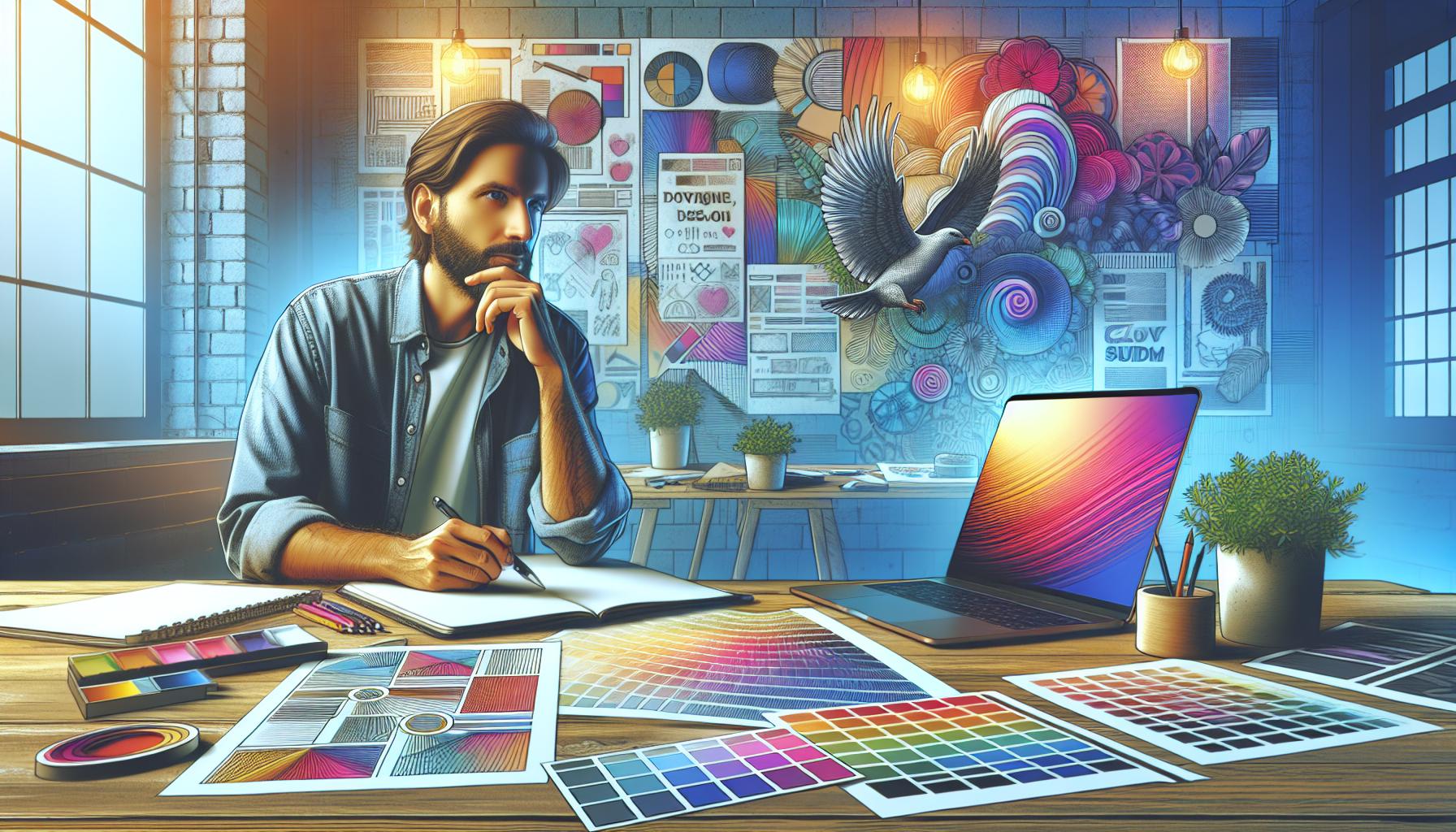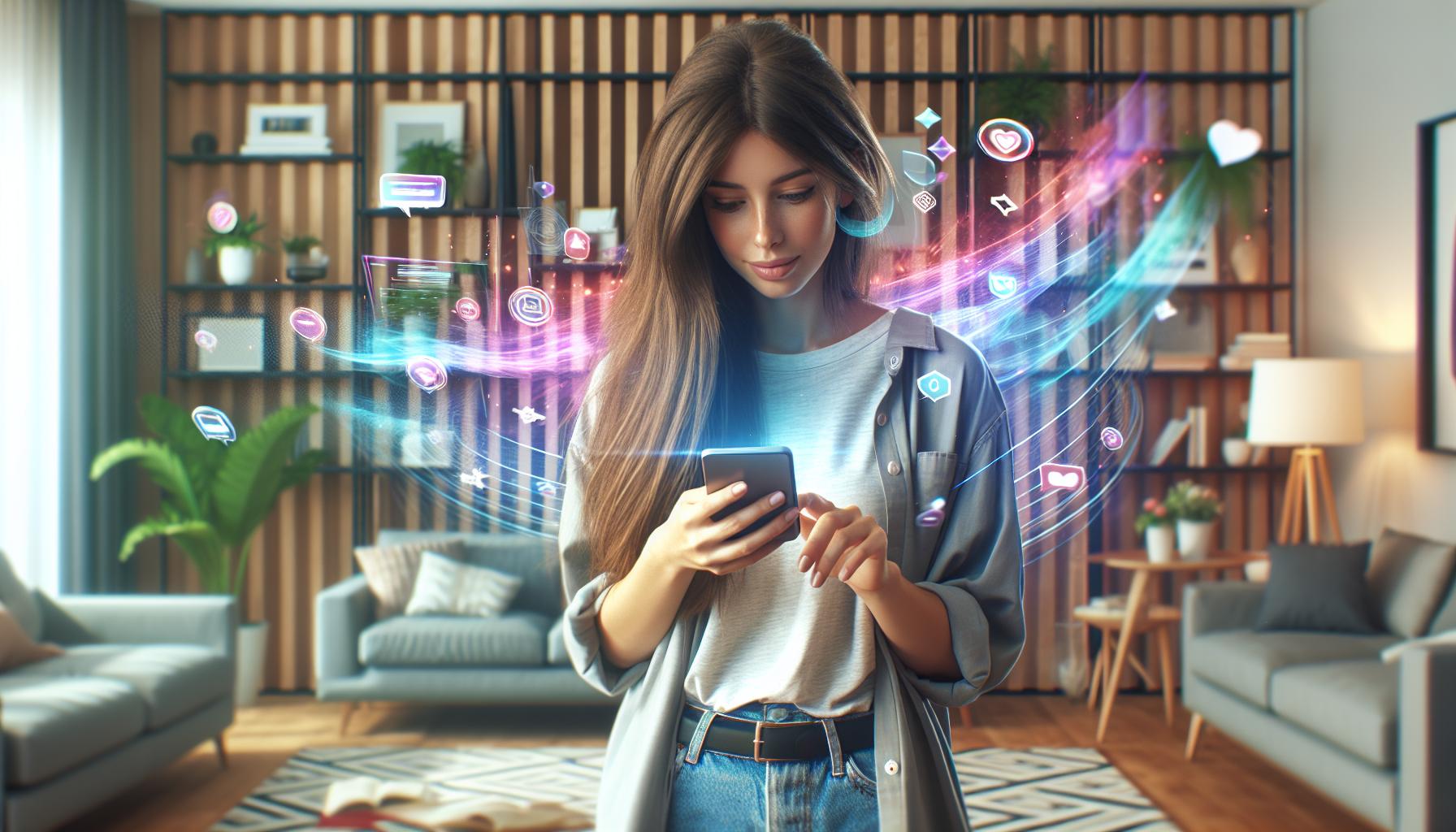In the fast-paced world of social media, design trends can change quicker than a cat video goes viral. What worked yesterday might be yesterday’s news today. Keeping up with these trends isn’t just about aesthetics; it’s about standing out in a sea of endless scroll. If they want to grab attention and keep followers engaged, they need to stay ahead of the curve.
Social Media Design Trends
Social media design trends continuously evolve, reflecting users’ changing preferences. Visual elements play a critical role in brand recognition and engagement. Platforms such as Instagram often favor bold colors and striking imagery for effective storytelling. Minimalist designs have emerged, promoting simplicity while enhancing user experience.
Data shows that incorporating animations and motion graphics boosts interaction rates significantly. Graphics featuring vibrant palettes attract more attention, making them a popular choice among influencers and brands. Typography remains essential; unique fonts can convey brand identity. Brands use custom typefaces to stand out in crowded newsfeeds.
User-generated content also shapes design trends. Incorporating authentic images from followers fosters community and builds trust. Many brands spotlight such content to enhance relatability and deepen audience connection.
Incorporating accessibility features is gaining traction. Designers prioritize inclusive elements, ensuring that content is accessible to all users. Color contrast and alt text for images are vital in this aspect.
Overall, social media design trends reflect a blend of aesthetics and functionality. Trends often emphasize authenticity, simplicity, and user engagement. Keeping an eye on these evolving trends allows brands to maintain relevance and achieve greater success.
Popular Design Trends in 2023

Staying current is crucial for effective social media design. The following trends illustrate the evolving preferences of users.
Minimalist Aesthetics
Minimalism emphasizes simplicity and functionality. Clean layouts, ample white space, and easy navigation enhance user experience. Reducing clutter directs attention to key messages and visuals. Brands that adopt this approach often find improved engagement rates. Overall, minimalist designs resonate well with audiences looking for clarity and focus.
Bold Typography
Typography captures attention and communicates brand identity. Unique fonts and large type sizes stand out amidst competing content. Strong typography enhances readability and influences emotional response. Designers increasingly experiment with font pairings to create memorable visual impact. As a result, bold typography remains a powerful tool for effective social media communication.
Gradients and Color Palettes
Gradients breathe life into social media designs. They add depth and dimension, making visuals more engaging. Vibrant color palettes evoke emotions and help brands convey messages effectively. Utilizing contrasting hues and smooth transitions captures user attention. Consequently, gradients and diverse color schemes play significant roles in enhancing visual storytelling.
Impact of User Experience on Design

User experience profoundly influences design choices in social media. Engaging visuals lead to deeper interactions, fostering a connection between users and brands. Brands that prioritize user engagement see higher retention rates and loyalty. Incorporating user feedback into design elements enhances functionality, which ultimately results in a more inviting platform. Statistics show that personalized content significantly increases interaction rates, reinforcing the necessity of attention-grabbing aesthetics.
Importance of Engagement
Engagement acts as a key metric for measuring success on social media. Captivating design elements encourage users to spend more time on a brand’s page. Bold typography and vibrant colors often draw eyes, driving likes and shares. Data indicates that posts designed with user engagement in mind experience 120% higher interaction rates. Focusing on creating visually appealing content allows brands to stand out among competitors. Relevant visuals paired with clear messaging can stimulate conversation and boost audience participation.
Accessibility Considerations
Accessibility in design ensures that all users can interact with social media content. Features such as high color contrast and alternative text significantly benefit users with disabilities. Inclusive design not only expands audience reach but also enhances brand reputation. Following accessible design principles leads to improved overall user experience, which directly supports brand loyalty. Brands that implement accessibility measures increase user satisfaction by 20%. Prioritizing accessibility in design keeps content available to diverse audiences while meeting legal requirements, reinforcing social responsibility.
Emerging Technologies Influencing Design

Emerging technologies like augmented reality and motion graphics reshape social media design trends significantly. These advancements enhance user engagement, transforming how brands connect with their audiences.
Augmented Reality
Augmented reality (AR) creates immersive experiences. Brands utilize AR to allow users to interact with products before making purchases, effectively bridging online and offline experiences. Interactive filters and effects on platforms like Instagram and Snapchat encourage user creativity and increase shares. This trend appeals particularly to younger audiences, generating excitement and fostering brand loyalty. Industry reports show that AR can improve conversion rates, making it a valuable tool for marketers seeking a competitive edge. Examples of successful AR campaigns demonstrate increased user retention and deeper emotional connections through engaging storytelling.
Motion Graphics
Motion graphics capture attention more effectively than static visuals. Brands leverage animations to communicate messages and tell stories dynamically. According to recent studies, incorporating motion designs can increase engagement rates by up to 80 percent. Enhanced visual appeal encourages users to spend more time interacting with content, which strengthens brand awareness. Platforms like TikTok and Instagram Stories prominently feature these dynamic elements, showcasing their growing popularity. Engaging motion graphics not only retain audience interest but also promote sharing, leading to enhanced organic reach. Content creators and brands that embrace motion graphics foster stronger connections with their followers, driving overall success.
Future Predictions for Social Media Design
Anticipated trends suggest a continued focus on minimalist aesthetics in social media design. Brands look to simplicity and functionality, which improves engagement rates significantly. Gradients and vibrant color palettes dominate visual storytelling, adding depth and evoking strong emotions within audiences.
Emerging technologies play a vital role in shaping future design strategies. Integration of augmented reality enhances user interaction with products, bridging online and offline experiences. Younger audiences respond positively to immersive experiences, improving conversion rates and fostering brand loyalty.
Motion graphics emerge as a preferred choice due to their ability to capture attention effectively. Studies indicate engagement rates can increase by up to 80 percent through dynamic visuals. TikTok and Instagram Stories utilize these elements prominently, retaining user interest while promoting sharing.
Accessibility features remain a pivotal consideration for brands aiming for inclusivity. Ensuring content is accessible across all platforms boosts audience reach and enhances brand reputation substantially. Elements like color contrast and alt text help create an inviting experience for users with disabilities.
User-generated content continues to shape design trends, emphasizing community and trust-building among followers. Engaging visuals prompt deeper interactions and encourage brand loyalty, which is critical for maintaining relevance.
Overall, a blend of authenticity, user engagement, and inclusivity defines the future of social media design. Prioritizing these elements will enable brands to connect meaningfully with their audiences and adapt to the ever-evolving digital landscape.
Engage Audience Effectively.
Staying ahead in social media design trends is essential for brands aiming to engage their audience effectively. Embracing minimalism bold typography and vibrant color palettes can significantly enhance user interaction and brand identity.
As technology advances user-generated content and accessibility features will continue to shape the design landscape. Brands that prioritize these elements will not only attract attention but also build lasting relationships with their audiences.
The future of social media design lies in authenticity and inclusivity ensuring that every user feels valued and connected.


